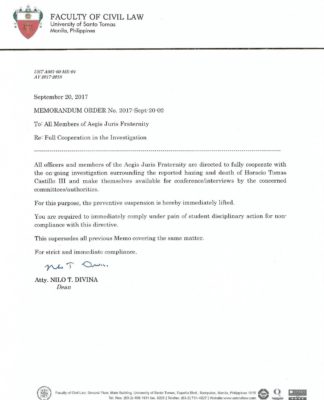MANY Christians take him as the incarnation of evil. He is thought to be a man of envy and deceit, most infamously for his treacherous kiss. His birth and death were accursed by the gospels. He is Judas Iscariot, long-known traitor to the Christ.
But a recently surfaced ancient document claims just the opposite.
The “Gospel of Judas,” a 1,700-year-old Coptic (Egyptian language in Greek) text paints Judas as a hero and not a traitor. Contrary to popular belief that he betrayed Jesus for 30 pieces of silver, Judas is portrayed as an obedient follower, who in handing Jesus over to authorities, did his leader’s bidding—liberating the divine Christ through death.
But Fr. Efren Rivera, O.P., a biblical scholar who trained at the École Biblique et Archéologique Française in Jerusalem and obtained his licentiate in Sacred Scriptures from the Pontifical Biblical Commission in Rome, said the discovery of the “Gospel of Judas” should pose no threat to the Catholic faith.
“The text is Gnostic, and is based on shaky esoteric beliefs,” Rivera told the Varsitarian.
Prevalent during the second to the fourth century, Gnosticism is an ancient belief that inspired many apocryphal gospels, like those of Mary, Thomas, and Philip. While Christianity is monotheistic, Gnosticism is duotheistic, believing in a good god who created the spirits, and an evil god who created matter. Since matter is the prison of the soul, Judas was for Gnostics a hero for liberating Jesus from his body through crucifixion.
“For Gnostics, the body and the material world are plainly evil,” Rivera said.
Rivera questioned the classification of the text as a “gospel.”
“Why call it a ‘gospel’ if its contents comprise only one chapter or only seven codex pages that hardly give accounts on Jesus?” Rivera asked. “Our shortest gospel, Mark, runs to 16 chapters with more or less 22 pages.”
Meanwhile, Fr. Pedro Tejero O.P., a spiritual director in the UST Central Seminary, said the Catholic Church never denied the existence of the manuscript, contrary to allegations. In fact, the text was cited in 180 A.D. by St. Irenaeus, bishop of Lyon, who considered it a work of separatist Gnostic cults.
St. Judas?
Elaine Pagels, a Harvard University theologian, contends that the early Christians maligned Judas because of his strong identification with the Jews. She said Christians wanted to dissociate themselves from the Jews to court Imperial Rome, which was becoming anti-Semitic.
In an aim to authenticate, conserve, and translate the questioned archeological find, the National Geographic Society, Maecenas Foundation for Ancient Art, and Waitt Institute for Historical Discovery commissioned a carbon-dating process at the University of Arizona to examine the papyrus book containing the gospel.
“The manuscript was so brittle that it would crumble at the slightest touch,” said University of Geneva professor Rodolphe Kasser, chief translator of the text.
The text dates back to anywhere from 220 to 340 A.D. Unlike the gospels of Matthew, Mark, Luke, and John, the Judas text was not written during the apostolic age, from 64 to 100 A.D., when Jesus’ followers were still alive to verify accounts. Without any apostolic authority to validate the contents of the gospel, the credibility of the manuscript remains suspect.
Of the controversy accompanying the discovery and interpretation of the manuscript, Rivera said commercialization was the real motive to make the issue “sellable.”
“Since it will require a lot of expense to reconstruct the manuscript, the individuals behind the find created a controversy for them to attract sponsors and recover parts of their investment,” he said.
But the debate on the value of the “Gospel of Judas,” as far as Catholicism is concerned, is a closed book. K. P. Bayos















